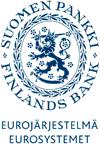 Research Discussion Papers, Bank of Finland
Research Discussion Papers, Bank of Finland
No 30/2004:
Central counterparty clearing: constructing a framework for evaluation of risks and benefits
Kirsi Ripatti ()
Abstract: A Central Counterparty (CCP) is an entity that interposes
itself between transacting counterparties – a seller vis-ŕ-vis the original
buyer and a buyer vis-ŕ-vis the original seller – to guarantee execution of
the transaction. Thus, the original transacting parties substitute their
contractual relationships with each other with contracts with the CCP.
Central Counterparty Clearing has become increasingly popular in Europe,
not just in derivatives markets, where, due to the high risk involved, it
has been common for decades, but also in equities markets. Within the
European Union, the main factor motivating the increased sophistication in
clearing arrangements is the ongoing process of European economic
integration, ie the euro’s introduction, the ongoing organisation of an
internal market for financial services and the corresponding objective of
creating a pan-European financial infrastructure for payments and
securities clearing and settlement.
Central counterparty clearing
houses exert a broad influence on the functioning of financial markets.
They can increase the efficiency and stability of financial markets to the
extent that their smooth functioning results in a more efficient use of
collateral, lower operating costs and greater liquidity. As market players
actively try to achieve economies of scale and scope with mergers and
through harmonising their technical processes, they inevitably have had to
focus on one of the most fragmented areas in Europe’s securities market
infrastructure – clearing and settlement. Because of the importance of its
role, a CCP must have sound risk management. The CCP assumes responsibility
in the aggregate and reallocates risk among participants. Moreover, if the
CCP fails to perform risk management well, it can increase risk in the
markets.
While the big market players dominate the current CCP market
in Europe, it is not only the big players who can benefit from a
functioning CCP. With the right structure, a CCP enables small players to
stay in the market and makes it possible for issuers in a regional
marketplace to achieve market funding. Indeed, this is the tendency
currently seen in the newest EU member states – and one of the main
arguments against the single European CCP model.
Although, the purpose
has been to leave CCP questions to market participants, regulatory,
oversight and supervisory issues can drive the actions of market
participants. Indeed, authorities must sometimes be actively involved in
boosting a CCP project to keep their home markets competitive. This may
well be the situation faced by the Nordic/Baltic market in the near future.
Thus, this paper attempts to give a neutral evaluation of the risks and
benefits related to the functionality of CCPs in integrating markets and
construct a framework for possible future risk-benefit analysis in a
Finnish/Nordic-Baltic clearing and settlement infrastructure that
incorporates a CCP solution. This is an updated version of a Bank of
Finland working paper (Financial Markets Department 01/04).
Keywords: central counterparty clearing; clearing; settlement; securities markets; infrastructure; integration; (follow links to similar papers)
JEL-Codes: G15; G20; G28; G33; G34; (follow links to similar papers)
67 pages, October 13, 2004
Before downloading any of the electronic versions below
you should read our statement on
copyright.
Download GhostScript
for viewing Postscript files and the
Acrobat Reader for viewing and printing pdf files.
Full text versions of the paper:
0430.pdf 
Download Statistics
Questions (including download problems) about the papers in this series should be directed to Minna Nyman ()
Report other problems with accessing this service to Sune Karlsson ()
or Helena Lundin ().
Programing by
Design by Joachim Ekebom
 Research Discussion Papers, Bank of Finland
Research Discussion Papers, Bank of Finland
 Research Discussion Papers, Bank of Finland
Research Discussion Papers, Bank of Finland